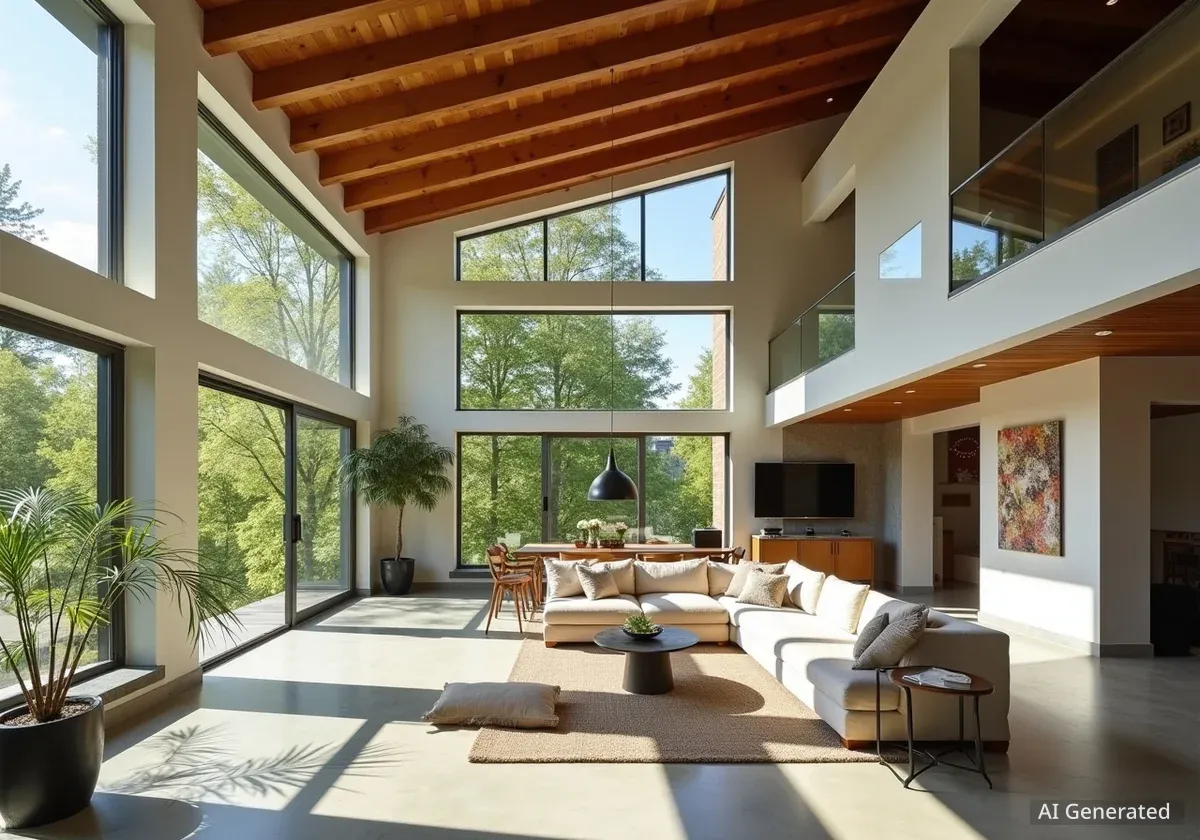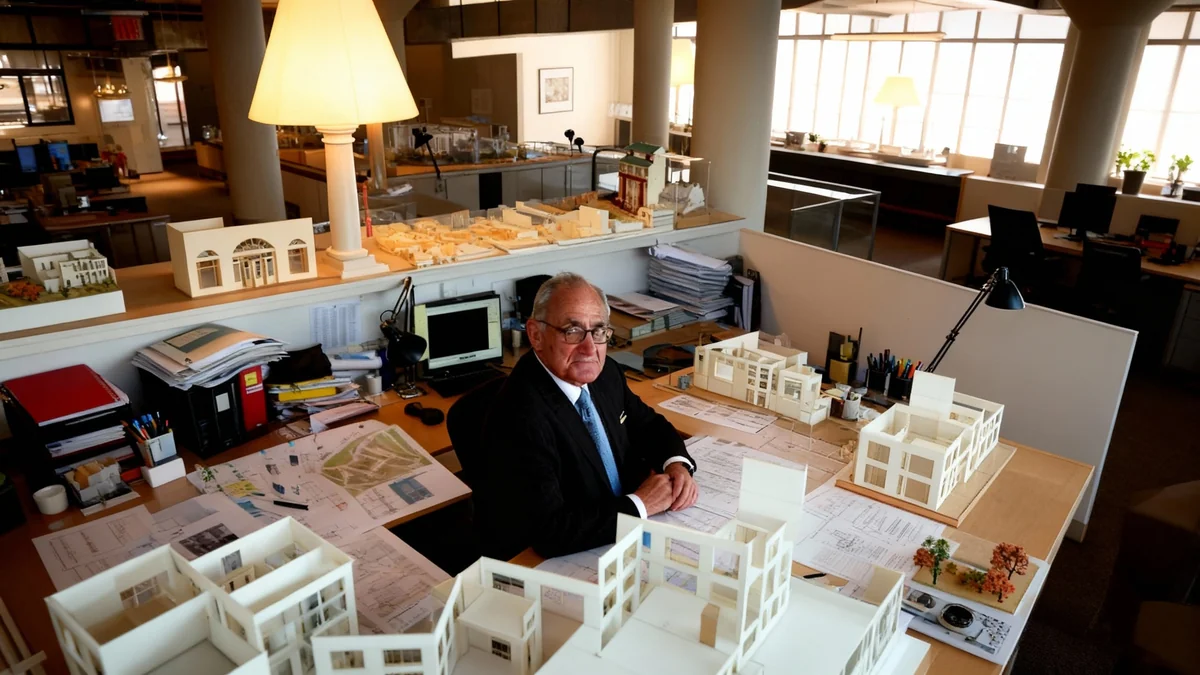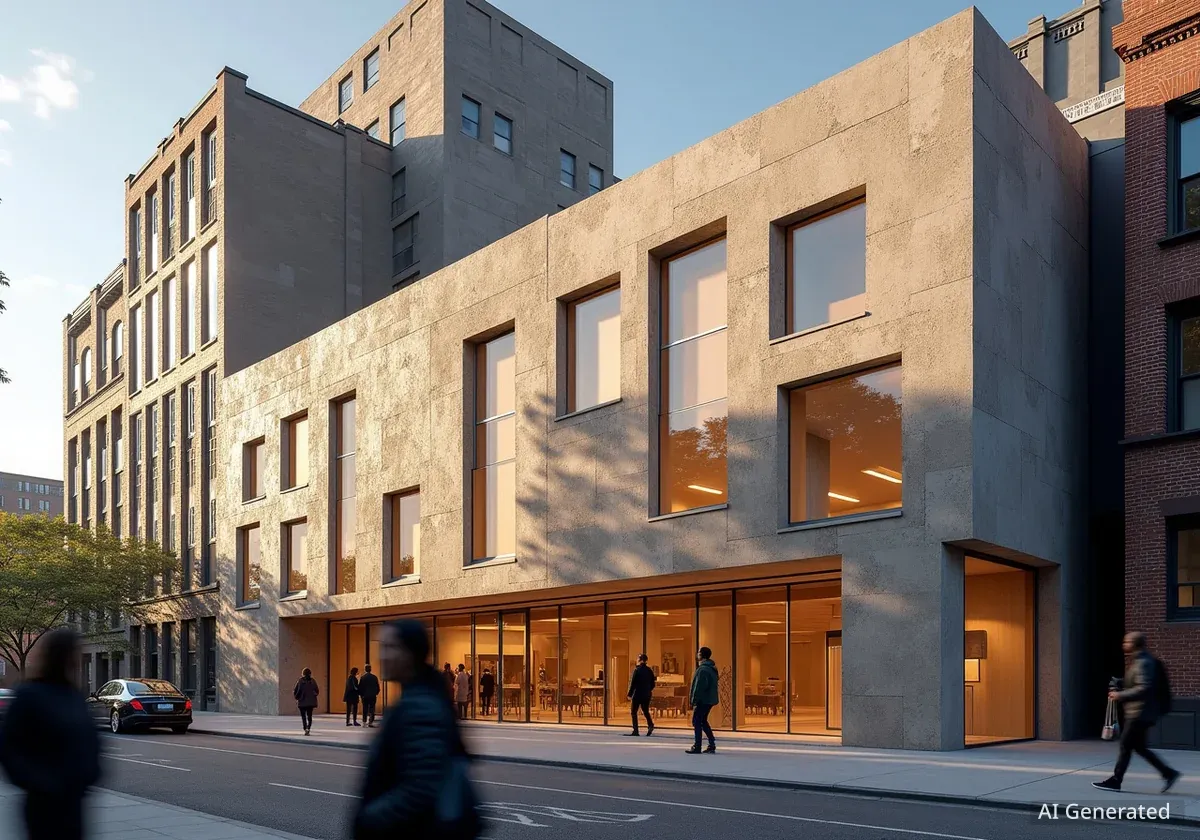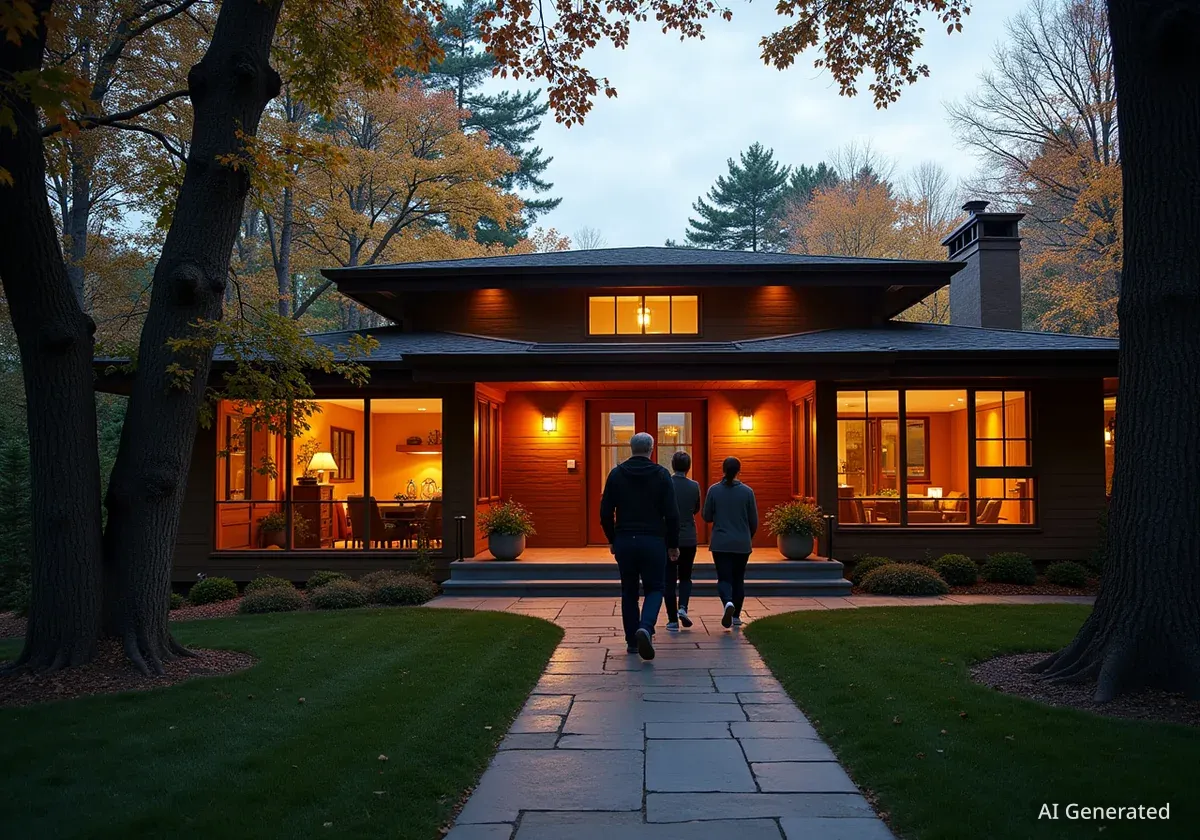A 1920s Seattle building, once an artist's studio and a church, has undergone a significant renovation by SHED Architecture & Design. This project transformed the structure into a compact, two-level residence for restaurateur Quynh-Vy Pham. The design carefully integrates the building's rich history with modern living spaces, featuring a striking black exterior and interior elements that honor its past.
Key Takeaways
- SHED Architecture & Design renovated a 1927 building in Seattle's Leschi neighborhood.
- The structure, originally 1,000 square feet, was expanded to 1,858 square feet.
- The design honors the building's history as an artist's studio and church, and also the owner's late brother.
- Key features include a black exterior, an enlarged pink window, and repurposed historical elements.
- The interior prioritizes natural light, open spaces, and flexible storage solutions.
From Studio to Sanctuary: A Historic Transformation
The building, constructed in 1927, has a varied past. It first served as a studio for Seattle impressionist artist Louise Crow. Later, it became a church. Eventually, the 1,000-square-foot structure was converted into a home. This property was inherited by Quynh-Vy Pham, owner of the well-known Vietnamese Phở Bắc restaurants in Seattle's Little Saigon area. Her late brother had started the renovation work.
The house sits on a 2,835-square-foot lot in the Leschi neighborhood, close to Frink Park. This lot had non-conforming conditions. SHED Architecture & Design expanded the existing single-story building by adding a second floor and a half-story for storage. This increased the total living space to 1,858 square feet, while preserving the original foundation and character of the building.
“The Phở Bắc House is the result of a layering of histories, both personal and local, to create a compact home that reflects the way that Quynh-Vy lives, works and entertains,” stated Rebecca Marsh, a project architect at SHED. “The design pulled from the history of the existing structure, its past functions and the desire to honor her brother's legacy.”
Project Numbers
- Original Building Area: 1,000 sq ft (92 sq m)
- Renovated Area: 1,858 sq ft (173 sq m)
- Lot Size: 2,835 sq ft (263 sq m)
- Construction Year: 1927
Exterior Design: Blending Old and New
The home's exterior showcases a blend of historical elements and modern updates. The north facade, elevated from street level, features a prominent large window. This window is framed by charcoal grey fiberglass shingles. These shingles offer an economical yet stylish tribute to the building's original cedar siding.
The original 1927 window was significantly enlarged. This change allows more natural light into the home. It was also painted a vibrant pink. This pink color serves two purposes: it references the signature hue of Pham's Phở Bắc restaurants and acknowledges her brother's initial renovation efforts. The former window frame was repurposed inside the house, becoming an interior screen and a guardrail for the stairs. This preserves a tangible piece of the structure's long history.
Leschi Neighborhood History
The Leschi neighborhood in Seattle is known for its scenic views of Lake Washington and the Cascade Mountains. It has a rich history, featuring a mix of historic homes and modern developments. Frink Park, a natural area with walking trails, adds to the neighborhood's appeal. Properties in this area often present unique challenges due to varying lot sizes and existing structures.
Interior Spaces: Light, Flow, and Flexibility
The interior design focuses on maximizing natural light, creating clear circulation paths, and ensuring an open feel. Social areas on the ground floor, including the living room, dining room, and kitchen, flow seamlessly. These spaces open directly onto a large back patio, enhancing the connection between indoor and outdoor living.
The upper floor houses the private areas. It includes two bedrooms, a shared bathroom, and a sitting room. This sitting room leads to a roof deck, offering views of the street below. A half-level is cleverly integrated into the street-side retaining wall. This area provides essential storage and space for mechanical systems.
Creative Use of Space and Materials
Ceiling heights vary throughout the home. This creates dynamic connections between rooms. The studio designed these variations to give the compact home an open and generous atmosphere. This approach makes the 1,858-square-foot space feel larger and more expansive than its actual footprint.
The material palette combines durable, cost-effective new materials with salvaged elements from the property. For example, a brass pendant light from the former church now hangs in the stairwell. Salvaged beams are visible in the dining room. These historical touches are complemented by warm walnut finishes and subtle pink details, tying into the exterior's accent color.
- Natural Light: Enlarged windows and open layouts bring in ample sunlight.
- Circulation: Clear pathways ensure easy movement between rooms and floors.
- Openness: Varying ceiling heights and connected social spaces create a spacious feel.
- Indoor-Outdoor Connection: Ground floor opens to a large back patio.
- Flexible Storage: Integrated solutions maximize utility in a compact home.
Integrated Solutions and Storage Innovation
SHED collaborated with Space Theory, a Brooklyn-based company, to develop flexible storage solutions. A custom bench extends the length of the home. This multi-functional piece serves as integrated seating, storage, display space, and a media center. This design ensures that every inch of the compact home is utilized efficiently and thoughtfully.
In the dining room, upper cabinets frame the space. These cabinets are accessible via a library ladder, extending the kitchen's storage capacity. This innovative approach addresses the practical needs of a modern home while maintaining a clean and uncluttered aesthetic. The focus on integrated storage helps maintain the open and airy feel despite the home's relatively small size.
The renovation of the Phở Bắc House stands as an example of how historical buildings can be adapted for contemporary living. It respects the past while providing all the amenities required for a busy restaurateur. The project highlights SHED Architecture & Design's ability to create unique, highly personalized spaces that respond to both the site's history and the owner's lifestyle.
This project is part of a series of residential renovations SHED has completed in the Pacific Northwest. Other notable projects include a Portland house centered around a skylight, a West Seattle home with a jagged roof inspired by Swiss mountain peaks, and a Shoreline residence converted from a midcentury assisted living facility. The photography for the Phở Bắc House was done by Rafael Soldi.




